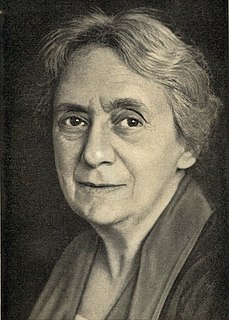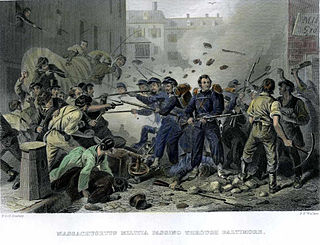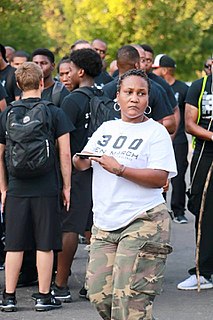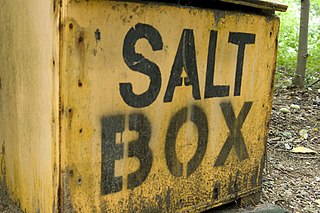
Baltimore Arena is an arena located in Baltimore. The Arena is located about a block away from the Baltimore Convention Center on the corner of Baltimore Street and Hopkins Place; it is also only a short distance from the Inner Harbor. It seats 11,100 and can be expanded up to 14,000, depending upon the event. The Arena is owned by the city of Baltimore and is currently managed by ASM Global, a private management company.

Henrietta Szold was a U.S. Jewish Zionist leader and founder of Hadassah, the Women's Zionist Organization of America. In 1942, she co-founded Ihud, a political party in Mandatory Palestine dedicated to a binational solution.

The Baltimore riot of 1861 was a civil conflict on Friday, April 19, 1861, on Pratt Street, in Baltimore, Maryland. It occurred between antiwar "Copperhead" Democrats and other Southern/Confederate sympathizers on one side, and on the other, members of Massachusetts and Pennsylvania state militia regiments en route to the national capital at Washington who had been called up for federal service. The fighting began at the President Street Station, spreading throughout President Street and subsequently to Howard Street, where it ended at the Camden Street Station. The riot produced the first deaths by hostile action in the American Civil War and is often called the "first bloodshed of the Civil War".
The American Birth Control League (ABCL) was founded by Margaret Sanger in 1921 at the First American Birth Control Conference in New York City. The organization promoted the founding of birth control clinics and encouraged women to control their own fertility. In 1942, the league became the Planned Parenthood Federation of America.

Severn Teackle Wallis was an American lawyer and politician.

Hamilton Hills is a mixed-use suburban neighborhood located in the northeastern corner of Baltimore City, Maryland. Hamilton Hills represents a section of Hamilton, a larger historic area that includes other neighborhoods in Northeast Baltimore. The neighborhood's borders are Old Harford Road and Harford Road to the east, Echodale Avenue to the south, Perring Parkway to the west and the Baltimore County line to the north. The main thoroughfare in Hamilton Hills is Harford Road, which has been an integral part of the area's history.
Rebecca Alban Hoffberger is the founder and director of the American Visionary Art Museum, America's official national museum for outsider art, located in Baltimore, Maryland. A colorful public figure, she has been called “the P. T. Barnum of the outsider art world“.

The city of Baltimore, Maryland, has been a predominantly working-class town through much of its history with several surrounding affluent suburbs and, being found in a Mid-Atlantic state but south of the Mason-Dixon line, can lay claim to a blend of Northern and Southern American traditions.
The Baltimore bank riot of 1835 in the major port city of Maryland was a violent reaction to the failure of the Bank of Maryland in 1834. Thousands of citizens had lost millions of dollars in savings. The riot, which lasted from 6 to 9 August, attacked the homes and property of a number of former directors of the bank, who had been accused of financial misconduct and fraud, as well as the federal district courthouse located on Battle Monument Square. The Baltimore bank riot was one of the most violent and destructive events of civic unrest in any American city prior to the Civil War.

This article describes the history of the Baltimore and its surrounding area in central Maryland since the establishment of settlements by European colonists in 1661.
The history of the Germans in Baltimore began in the 17th century. During the 19th century, the Port of Baltimore was the second-leading port of entry for immigrants, after Ellis Island in New York City. Many Germans immigrated to Baltimore during this time.
Lemon sticks are a type of stick candy. They are similar to candy canes and peppermint sticks except lemon oil and acids are used for the flavoring. And for the coloring a clear batch is used for the body and a white batch for the stripe. They are not the same as a lemon peppermint stick, otherwise known as a Baltimore lemon stick.
The Flower Mart is an annual festival native to Baltimore, Maryland.

Pan-American Conference of Women occurred in Baltimore, Maryland, US in 1922. It was held in connection with the third annual convention of the National League of Women Voters in Baltimore on April 20 to 29, 1922. Cooperating with the League in bringing the Pan American Women's conference to the United States were the US Secretary of State, Charles Evans Hughes, the US Secretary of Commerce, Herbert Hoover, and Dr. Leo Stanton Rowe, Director General of the Pan American Union (PAU). The conference was meant to strengthen and carry a step forward the initiative undertaken at the Second Pan American Scientific Congress, when a woman's auxiliary committee was formed to develop closer cooperation between the women of the American continent.

Edith Houghton Hooker was an American suffragist and social worker. She was a leader of the suffrage movement in Maryland in the early twentieth century and was posthumously inducted into the Maryland Women's Hall of Fame. She was a maternal aunt of actress Katharine Hepburn.
John Emory Toussaint Camper, born in Baltimore, Maryland was a prominent physician and Civil Rights activist. Raised in Sparrows Point, Camper was a graduate of Frederick Douglass High School. Prior to attending Howard University, Camper served in World War I, and during World War II, he was appointed to the Maryland Commission to Study Problems Affecting the Colored Population and served as a draft-board physician. While attending Howard, Camper was a star athlete in several sports, including football, and he was president of the school's chapter of the Phi Beta Sigma Fraternity.

Erricka Bridgeford is an African American activist from Baltimore. She worked to get Maryland's death penalty law repealed in 2013, and founded and co-organizes quarterly 72-hour "Ceasefire" weekends. Baltimore Ceasefire weekends began in 2017, in the hope of reducing violence. Erricka was named 2017's Marylander of the Year by The Baltimore Sun.

The history of African Americans in Baltimore dates back to the 17th century when the first African slaves were being brought to the Province of Maryland. Majority white for most of its history, Baltimore transitioned to having a black majority in the 1970s. As of the 2010 Census, African Americans are the majority population of Baltimore at 63% of the population. As a majority black city for the last several decades with the 5th largest population of African Americans of any city in the United States, African Americans have had an enormous impact on the culture, dialect, history, politics, and music of the city. Unlike many other Northern cities whose African-American populations first became well-established during the Great Migration, Baltimore has a deeply rooted African-American heritage, being home to the largest population of free black people half a century before the Emancipation Proclamation. The migrations of Southern and Appalachian African Americans between 1910 and 1970 brought thousands of African Americans to Baltimore, transforming the city into the second northernmost majority-black city in the United States after Detroit. The city's African-American community is centered in West Baltimore and East Baltimore. The distribution of African Americans on both the West and the East sides of Baltimore is sometimes called "The Black Butterfly", while the distribution of white Americans in Central and Southeast Baltimore is called "The White L."
Augusta Theodosia Lewis Chissell was an African-American suffragist and civic leader in Baltimore, Maryland. Chissell was a leader in multiple community organizations, including as a founding member of the Baltimore branch of the NAACP. In 2019 she was inducted into the Maryland Women's Hall of Fame for her work in promoting women's rights and racial equity.

A Baltimore Salt Box is an example of a grit bin as used in Baltimore, Maryland. They are wooden boxes with hinged covers and are annually distributed around as a supplement to the city's snow removal and road salting operations. They are a service of Baltimore's Department of Transportation, which distributes the boxes around the city in the late fall in anticipation of winter weather. The boxes are filled with a mixture of road salt and sand for citizens to spread as needed to assist with traction and to prevent or melt icy patches on city streets.











